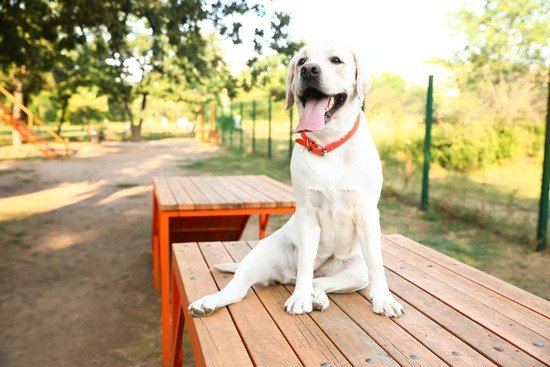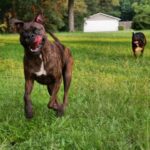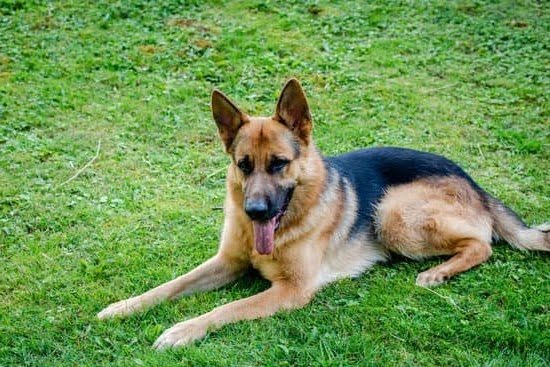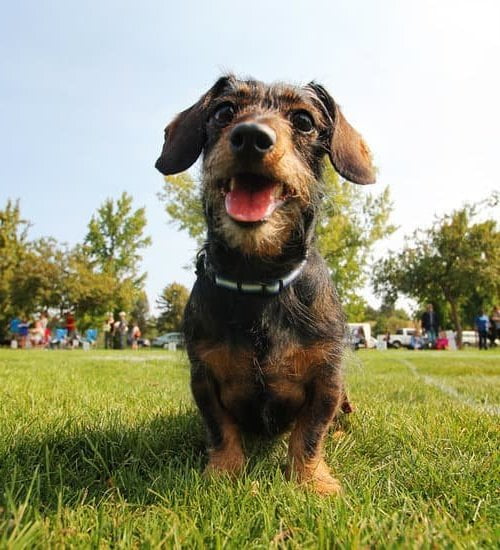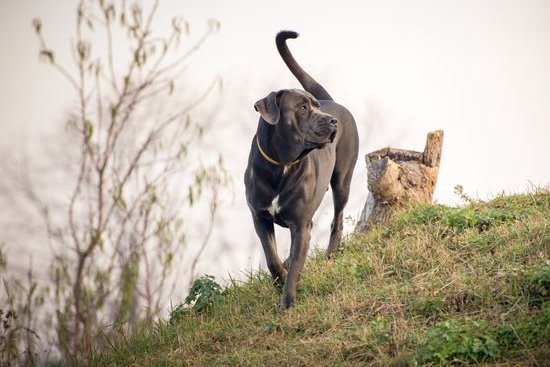Dogs and rats have a complex dynamic that can sometimes lead to unwanted behavior, such as a dog viewing a rat as prey. In this article, we will explore how to train your dog not to eat your rat. It is essential to understand the instincts of both dogs and rats to effectively address this issue.
Dogs have a natural instinct for hunting and chasing small animals like rats due to their predatory nature. On the other hand, rats are prey animals that are naturally skittish around larger animals like dogs. These inherent behaviors can create a challenging situation when trying to introduce these two pets into the same household.
To successfully prevent your dog from harming your rat, it is crucial to establish clear boundaries and provide a safe space for your rat where it feels secure. Additionally, leadership training for your dog can help them understand that the rat is not a toy or food but rather a member of the family that deserves respect.
By implementing techniques such as positive reinforcement and consistency in training, you can redirect your dog’s behavior and create harmony between your pets.
Setting Boundaries
Dogs and rats have a natural predator-prey relationship due to their instincts. However, it is possible to train your dog not to see your rat as prey. One of the key steps in achieving this is by setting boundaries and creating a safe space for your rat. By providing a designated area where your rat can feel secure and out of reach from the dog, you can minimize the chances of any undesirable interactions between them.
To create a safe space for your rat, consider investing in a sturdy cage or enclosure that is both escape-proof and elevated from the ground. Make sure the cage has secure locks and is placed in an area that is inaccessible to your dog when unsupervised. Additionally, provide plenty of enrichment inside the cage such as toys, hiding spots, and tunnels to keep your rat mentally stimulated.
Another important aspect of setting boundaries for your rat’s safety is training your dog on appropriate behavior around the cage. This can be achieved through obedience training focusing on commands like “leave it” or “stay”, which will help teach your dog impulse control when near the rat’s living space. Consistency in reinforcing these boundaries is crucial for your dog to understand what behavior is expected from them in relation to the rat.
| Training Tips | Description |
|---|---|
| Designate a safe space | Provide a secure cage or enclosure for your rat. |
| Obedience training | Teach commands like “leave it” or “stay” to enforce boundaries around the rat. |
| Consistency | Reinforce rules consistently so that your dog understands expected behavior. |
Establishing Authority
Dogs are naturally inclined to chase and potentially harm smaller animals like rats due to their predatory instincts. As a responsible pet owner, it is important to establish yourself as the leader of the pack and train your dog to recognize and respect boundaries when it comes to interacting with your pet rat. Here are some tips on how to train your dog not to eat your rat:
- Consistent Training: Consistency is key when it comes to establishing authority with your dog. Set clear rules and boundaries from the start and reinforce them consistently through training exercises.
- Positive Reinforcement: Use positive reinforcement techniques such as treats, praise, and rewards to encourage good behavior around your rat. Whenever your dog shows appropriate behavior like ignoring the rat or responding to commands, make sure to reward them promptly.
- Leadership Exercises: Incorporate leadership exercises into your daily routine with your dog. These can include activities like obedience training, leash walking, and practicing commands that reinforce your role as the leader.
By consistently implementing these training techniques, you can help ensure a safe and harmonious environment for both your dog and pet rat. Remember, patience and perseverance are crucial when it comes to training animals, so stay committed to helping your furry friends coexist peacefully in your home.
Positive Reinforcement
Consistency is crucial when using positive reinforcement to train your dog not to eat your rat. Make sure to reward your dog every time they exhibit the desired behavior of ignoring the rat. This will help solidify the connection between good behavior and positive outcomes in your dog’s mind. Remember that consistency is key to successful training, so make sure everyone in the household follows the same rules and rewards good behavior consistently.
In addition to rewarding good behavior, it is important to incorporate distractions and redirection techniques into your training strategy. If you notice your dog showing interest in the rat, quickly redirect their attention with a command or toy.
This teaches your dog that there are more appropriate ways to interact with their environment and helps prevent any undesirable behaviors. By combining positive reinforcement with redirection techniques, you can effectively train your dog not to eat your rat while also strengthening the bond between them.
| Training Method | Description |
|---|---|
| Positive Reinforcement | Rewarding good behavior with treats, praise, or playtime when ignoring the rat. |
| Consistency | Maintaining a consistent approach among all household members in rewarding good behavior around the rat. |
| Redirection Techniques | Using distractions or commands to redirect your dog’s focus away from the rat and towards more appropriate interactions. |
Consistency Is Key
Implementing a Regular Feeding Schedule
One important aspect of training your dog not to eat your rat is establishing a routine feeding schedule for both pets. Dogs, being creatures of habit, thrive on consistency.
By feeding your dog at the same times every day, they will learn when it is their mealtime and be less likely to focus on finding other sources of food, such as your pet rat. Additionally, by feeding your rat at specific times away from your dog, you can reduce the chances of them encountering each other during meal times.
Scheduling Playtime and Exercise
Incorporating regular playtime and exercise sessions into your daily routine not only helps keep both your dog and rat physically active but also contributes to creating a harmonious environment between them. Engage in interactive play with your dog using toys or go for walks together to release excess energy. By tiring out your dog through physical activities, they will be less inclined to view the rat as prey or a source of entertainment.
Consistent Training Sessions
Consistency in training is key when teaching your dog how to behave appropriately around your rat. Set aside dedicated time each day for training sessions focused on commands like “leave it” or “stay” when the rat is present.
Use positive reinforcement techniques such as treats and praise to reward good behavior when your dog listens to commands and ignores the rat. With persistent and consistent training sessions, you can effectively teach your dog not to see the rat as a target for chase or consumption.
By incorporating these routines into your daily schedule and sticking with them consistently, you can effectively train your dog not to eat your pet rat while fostering a positive relationship between both pets in the household. Remember that patience and dedication are essential in this process, but with time and effort, you can create a safe and harmonious environment where all pets coexist peacefully.
Prevention Techniques
Dogs have a natural instinct to chase small animals, including rats. To prevent any accidents or harm to your pet rat, it is crucial to implement various prevention techniques to keep them safe from your dog’s predatory instincts. By taking proactive measures, you can create a harmonious environment where both your dog and rat can coexist peacefully.
Here are some effective prevention techniques to consider:
- Provide a secure and separate living space for your rat where your dog cannot access. This could be a sturdy cage with multiple levels and hiding spots for the rat to feel safe.
- Supervise interactions between your dog and rat closely at all times. This way, you can intervene immediately if your dog shows any signs of aggression or prey drive towards the rat.
- Use baby gates or barriers to restrict access to certain areas of the house where the rat spends most of its time. This will create physical boundaries that prevent your dog from reaching the rat.
By incorporating these prevention techniques into your daily routine, you can effectively reduce the chances of any unwanted incidents between your dog and rat. Remember, being proactive and diligent in implementing these measures is key to ensuring the safety and well-being of both pets in your household.
Redirecting Behavior
Teaching Your Dog to Ignore the Rat
When it comes to training your dog not to eat your rat, one effective approach is teaching them how to ignore the rat completely. This can be achieved through a combination of desensitization and counter-conditioning techniques. Desensitization involves gradually exposing your dog to the presence of the rat in a controlled manner, while counter-conditioning focuses on changing your dog’s emotional response to the sight or smell of the rat.
Gradual Exposure
To start this training process, you can begin by having your dog on a leash and introducing them to the rat from a safe distance. Use positive reinforcement such as treats or praise when your dog shows calm behavior around the rat. Slowly reduce the distance between them over time as your dog becomes more comfortable with the rat’s presence. It’s important to always monitor their interactions closely and intervene if necessary.
Positive Reinforcement Techniques
Consistently rewarding your dog for ignoring the rat is crucial in reinforcing this behavior. Whenever your dog shows no interest in or avoids approaching the rat, immediately praise and reward them with their favorite treat. This will help create a positive association with ignoring the rat. Remember that patience and consistency are key in successfully training your dog not to eat your rat.
Seeking Professional Help
In conclusion, training your dog not to eat your rat requires a thoughtful and consistent approach. Understanding the instincts of both dogs and rats is crucial in creating a safe environment for your pets. Setting boundaries by providing a safe space for your rat and establishing authority through leadership training for your dog are essential steps in preventing any unwanted incidents.
Positive reinforcement, consistency, and establishing a routine are key components in successfully training your dog to coexist peacefully with your rat. Rewarding good behavior and redirecting negative behavior can help reinforce the desired behaviors in your dog. Additionally, implementing prevention techniques such as keeping your rat safe from your dog and teaching your dog to ignore the rat can further ensure their safety.
While many pet owners may be able to effectively train their dogs not to harm their rats on their own, seeking professional help from a trainer is important when facing challenges or if you feel overwhelmed. A trained professional can provide additional support, guidance, and expertise on how to effectively train your dog not to eat your rat. Remember, patience, consistency, and positive reinforcement are key as you work towards creating a harmonious relationship between your furry companions.
Frequently Asked Questions
What Do I Do if My Dog Eats a Rat?
If your dog eats a rat, it is important to monitor them for any signs of illness such as vomiting, diarrhea, or lethargy. Contact your veterinarian immediately for guidance on whether the rat could have transmitted any diseases to your pet.
Why Does My Dog Keep Eating Rats?
Dogs often eat rats because of their natural instinct to hunt and chase small animals. This behavior can be more common in certain breeds with strong prey drive or if they were not properly trained and socialized. It is essential to address this behavior promptly through training and enrichment activities to redirect their focus.
How Do I Stop My Dog From Killing My Wildlife?
To stop your dog from killing wildlife, it is crucial to supervise them when they are outside, especially in areas where there may be small animals present. Keeping your dog on a leash or within a fenced area can prevent them from hunting and causing harm to wildlife.
Additionally, providing mental and physical stimulation through toys, games, and regular exercise can help curb their hunting instincts. Training commands like “leave it” or “drop it” can also be useful in managing their behavior around wildlife.

Welcome to the blog! I am a professional dog trainer and have been working with dogs for many years. In this blog, I will be discussing various topics related to dog training, including tips, tricks, and advice. I hope you find this information helpful and informative. Thanks for reading!

